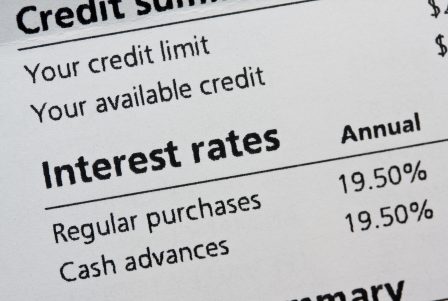How Do Creditors Set Interest Rates?

The Federal Reserve released data in 2015 that showed 70 percent of US consumers, or 174 million adults, had at least one credit card – the average card holder had about 4 cards stuffed in their wallets.
You would think Americans are well-versed on credit card usage; however, considering credit card debt is, on average, equal to about one-third of a household’s annual earnings, this optimistic view doesn’t seem to be the case.
Interest rates are among the leading causes of snowballing credit card debt, which is absurd considering interest charges can be avoided entirely. To become a savvy credit card user, here’s what you ought to know about the annual percentage rate (APR) attached to your account.
Factors that influence credit card interest rates
The type of credit card. There are many different types of credit cards, including business, student, limited purpose, and rewards credit cards. Your APR will vary depending on the type you have. For example, credit cards that allow you to earn rewards, such as cash back or travel points, generally have slightly higher interest rates as a tradeoff for the perks.
Your Credit Score. The better your credit score, the more likely creditor’s will offer you lower interest rates. When you have poor credit, the APR attached to your card can be significantly greater than the average rate. The average APR across all card types is about 16 percent – for those with bad credit, that figure is nearly 24 percent.
Changes to the Federal Funds Rate. Your interest rate can change proportionally with changes made by the Federal Reserve to the Federal Funds Rate. For example, when the Fed increased rates by a quarter of one percent, the APR on all variable credit cards grew by the same amount.
How you use your credit card. You can use most credit cards in different ways and each service comes with a different interest rate. Many standard cards allow you to swipe for purchases, receive cash advances, and transfer your balances. You’re probably most familiar with the standard interest rate for purchases.
Other APR rates. Depending on the terms and conditions, you may incur penalty fees in the form of higher interest rates for missed or late payments. Some credit card companies offer promotional rates, which usually expire in 6 months to a year, to encourage people to open an account.
How is your monthly interest charge calculated?
With most credit cards, you receive an annual percentage rate (APR), which is not the same thing as your monthly interest rate.
For most credit cards, companies calculate your monthly interest rate by dividing your APR by 365. Then, to calculate your monthly interest charges, your daily rate is then multiplied by the number of days in the month and this number is multiplied by your average daily balance.
Other credit cards may calculate your interest charges based on your balance at the beginning or end of the billing cycle instead of your average daily balance.
How to avoid paying interest on your credit card balance
By law, creditors must offer consumers a grace period of at least 21 days, which begins at the end of your billing cycle and stops on the due date. During this period, if you pay your balance on time and in full, you can avoid interest charges altogether. This method is like taking out an interest-free loan at the beginning of the month.
Of course, if paying your statement in full isn’t possible you can either try to keep your balance low or seek the lowest possible interest rate by researching your options before opening an account or simply requesting a lower rate on an existing account. Be aware, however, that asking creditors to lower your interest rate might prompt them to make a credit report inquiry, which could reflect poorly on your credit score.
Understanding how credit card interest works will allow you to better manage your accounts. However, if you’re already overburdened by credit card debt due to mounting interest charges, or even reckless spending habits, New Era Debt Solutions may be able to help.
Interest Rate FAQs
How Do Credit Card Interest Rates Work?
Credit card interest rates, expressed as the Annual Percentage Rate (APR), represent the cost of borrowing money on a credit card. These rates can be variable or fixed, with variable rates fluctuating based on different variables in the current market conditions. When carrying a balance on most credit cards, an interest rate charge is applied, and these are often calculated using the average daily balance method. The APR helps consumers compare costs between credit cards, while paying off the full balance by the due date can help avoid interest rate charges altogether. Understanding and managing credit card interest rates is crucial in minimizing costs and effectively managing credit card debt.
How Can I Lower the APR on My Credit Card?
Typically, the best way to get a lower APR for your credit card is to improve your credit score and get a new card altogether. Many credit institutions offer promotional rates for the first few months when opening a new card, and many offer you the ability to transfer your balance to that new card with the lower interest rate.
New Era is a debt settlement company that helps people dramatically reduce their debt obligation to secure their financial independence. Since 1999, we have settled over $275 million in debt for our clients.
To see if debt settlement is right for you, contact us or fill out the form on this page for your free debt analysis.
